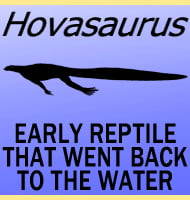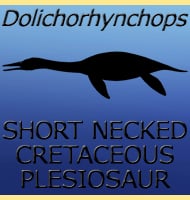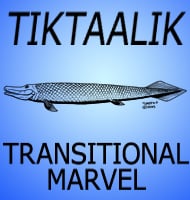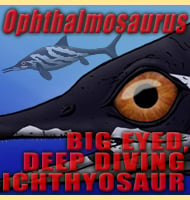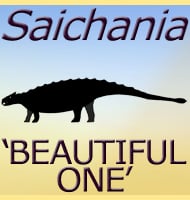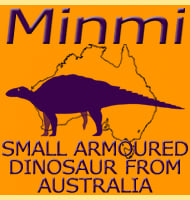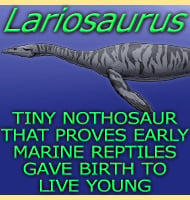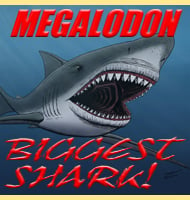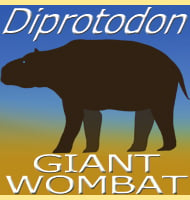In Depth
Oreopithecus is a paradox as while it is amongst the best known of fossil apes, there is still much confusion over how this primate lived and was related to other primates. This confusion is down to how Oreopithecus displays features that both suggest an arboreal life where it swung through the tree canopy, to other features that show development towards a bipedal locomotion.
The arms of Oreopithecus were long and with high degrees of motion that are seen to have been well adapted for brachiation (swinging from branch to branch). The hands however possessed a very high level of dexterity closer to that of humans. The pelvis is also short which when combined with the legs is seen as being better for walking on the ground. Oreopithecus is still not thought to have been totally bipedal, and rather than being directly related to other bipedal apes, it’s probable that these features are a case of convergent evolution. The feet are still like those of monkeys which further suggest that while Oreopithecus was better on the ground than other primates, it was not on the ground all the time.
It’s quite possible that the mix of features seen in Oreopithecus were actually born out of its environment, after while many of the fossil locations of Oreopithecus are connected to the mainland today, they would have been isolated by sea during the Miocene. This immediately cuts down upon the potential food which can result in a species either becoming smaller so that it does not need so much to keep its body going, or reducing in population so that there are fewer mouths to feed. A third survival strategy is available however, but only to those creatures with the intelligence and capability to implement it. By living in the tree canopy, Oreopithecus could reach foods that were unavailable to other creatures that were unable to reach up to them. By also being better able on on the ground however, with the addition of more dextrous hands for manipulating things, Oreopithecus could also search for and exploit other food sources, thereby diversifying in its foraging behaviour. This would allow Oreopithecus to pick and switch how it would forage depending upon which area was more abundant in food.
Ultimately however this diversification may be what cost Oreopithecus in the survival stakes. For most of its existence, Oreopithecus faced no real threats because of the absence of large predators, therefore it only had to adapt to the physical conditions of the habitat. Again this adaptation was to learn how to live on the ground and in the trees but to the point of being energy efficient, remembering that even though Oreopithecus could adapt its foraging, the total biomass available for food would have still been limited because of reduced space on an island ecosystem. When places like Tuscany became connected to the mainland however, this brought about an influx of new creatures, particularly large predators such as sabre toothed cats such as Machairodus. Predators such as these were perfectly adapted for ambush hunting with reasonable speculation being that they could have also ventured into the lower tree canopy. With Oreopithecus adapted for energy efficient locomotion rather than speed (something that was not a survival concern before the arrival of big predators) it was at an immediate disadvantage to these new predators. Further competition for the same food resources from other new forms would have increased pressure even further upon the genus.
Oreopithecus was once considered to be an early hominid because of the short pelvis and potential bipedalism; however the features and possible bipedalism are now considered a case of convergent evolution. Oreopithecus is today often regarded as being closely related to Dryopithecus.
Further Reading
– Neubeschreibung von Oreopithecus bambolii Gervais. – Schweizerische Pal�ontologische Abhandlungen, 66: 1-20. – J. H�rzeler – 1949. – Contribution � l’�tude de la dentition de lait d’ Oreopithecus bambolii Gervais. – Eclogae Geologicae Helvetiae 44: 404-411. – J. H�rzeler – 1952. – Ist Oreopithecus ein Hominide? – Abhandlungen der Mathematisch-naturwissenschaftlichen Klasse, Akademie der Wissenschaften und der Literatur zu Mainz 12: 467-497. – A. Remane – 1955. – Oreopithecus, un point de rep�re pour l’histoire de l’humanit� a l’�re Tertiare. – Probl�mes Actuels de Pal�ontologie, pp. 115-121. – J. H�rzeler – 1956. – A new Oreopithecus skeleton. – Science 128: 523. – W.L. Straus Jr. – 1958. – Oreopithecus bambolii Gervais: a preliminary report. – Verhandlungen der Naturforschenden Gesellschaft Basel. 69: 1–47. – J. H�rzeler – 1958. – The significance of Oreopithecus in the genealogy of man. – Triangle 4: 164-175. – J. H�rzeler – 1960. – Apidium and Oreopithecus. – Nature. 186 (4727): 824–826. – Elwyn L. Simons – 1960. – An anthropoid enigma: historical introduction to the study of Oreopithecus bambolii. – Journal of Human Evolution 15: 523–531. – E. Delson – 1986. – The implications of Oreopithecus for the origins of bipedalism, by Terry Harrison. – 1990. – Ape-like or hominid-like? The positional behavior of Oreopithecus bambolii reconsidered. – PNAS. 94 (21): 11747–11750. – Meike K�hler & Salvador Moy�-Sol� – 1997. – Oreopithecus was a bipedal ape after all: Evidence from the iliac cancellous architecture”. PNAS. 96 (15): 8795–8799. – Lorenzo Rook, Luca Bondioli, Meike K�hler, Salvador Moy�-Sol� & Roberto Macchiarelli – 1999. – Evidence of hominid-like precision grip capability in the hand of the Miocene ape Oreopithecus. – PNAS. 96 (1): 313–317. – Salvador Moy�-Sol�, Meike K�hler & Lorenzo Rook – 1999. – A new specimen and dental microwear in Oreopithecus bambolii. – Homo. 54 (1): 29–35. – E. Carnieri & F. Mallegni – 2003. – The bony labyrinth of Oreopithecus bambolii. – Journal of Human Evolution. 46 (3): 347–354. – Lorenzo Rooka, Luca Bondiolib, Franco Casalic, Massimo Rossic, Meike Ko�hlerd, Salvador Moya Sola & Roberto Macchiarelli – 2004. – Reevaluation of the lumbosacral region of Oreopithecus bambolii. – Journal of Human Evolution. 65 (3): 253–265. – G. A. Russo & L. J. Shapiro – 2013.

